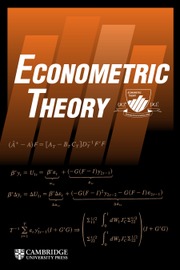No CrossRef data available.
Article contents
ON THE ROBUSTNESS OF MIXTURE MODELS IN THE PRESENCE OF HIDDEN MARKOV REGIMES WITH COVARIATE-DEPENDENT TRANSITION PROBABILITIES
Published online by Cambridge University Press: 16 June 2025
Abstract
This article studies the robustness of quasi-maximum-likelihood estimation in hidden Markov models when the regime-switching structure is misspecified. Specifically, we examine the case where the data-generating process features a hidden Markov regime sequence with covariate-dependent transition probabilities, but estimation proceeds under a simplified mixture model that assumes regimes are independent and identically distributed. We show that the parameters governing the conditional distribution of the observables can still be consistently estimated under this misspecification, provided certain regularity conditions hold. Our results highlight a practical benefit of using computationally simpler mixture models in settings where regime dependence is complex or difficult to model directly.
Information
- Type
- ARTICLES
- Information
- Creative Commons
- This is an Open Access article, distributed under the terms of the Creative Commons Attribution licence (https://creativecommons.org/licenses/by/4.0), which permits unrestricted re-use, distribution and reproduction, provided the original article is properly cited.
- Copyright
- © The Author(s), 2025. Published by Cambridge University Press
Footnotes
The authors wish to thank Patrik Guggenberger, Peter Phillips, and two referees for their helpful comments and suggestions. For the purposes of open access, the corresponding author has applied a CC-BY public copyright licence to any accepted manuscript version arising from this submission.

